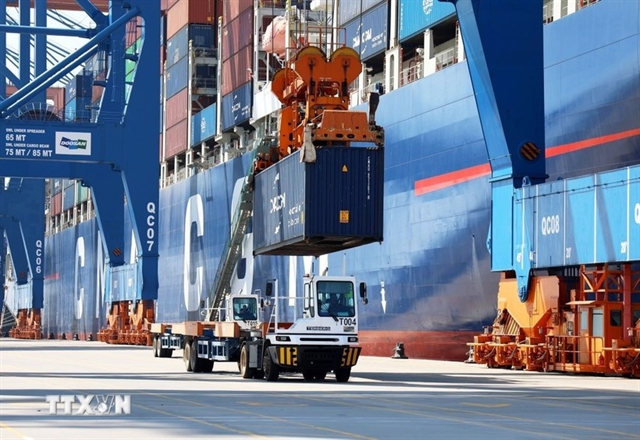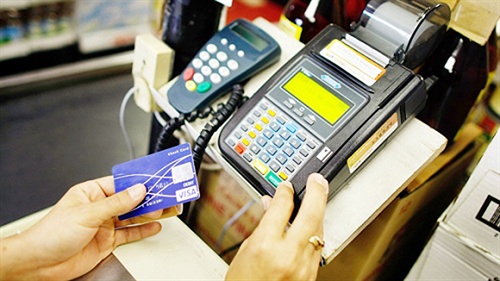 Economy
Economy

Developing the e-payment system together with improving the trust of consumers was critical for an e-commerce boom in Việt Nam, experts said at a conference yesterday.
 |
| Card payment at Co-opmart in HCM City. The online payment infrastructure in Việt Nam includes e-wallets, card switching systems, payment cards, internet banking, mobile banking and credit cards. Photo nld.vn |
HÀ NỘI – Developing the e-payment system together with improving the trust of consumers was critical for an e-commerce boom in Việt Nam, experts said at a conference yesterday.
Deputy Minister of Industry and Trade Đỗ Thắng Hải said at the conference jointly held by the Việt Nam Institute for Trade and Vietinbank that the development of online payment services was still at infant stage in the country where e-commerce was growing rapidly.
The ministry’s statistics revealed that business-to-consumer (B2C) revenue touched US$4.07 billion last year, a whopping rise of 37 per cent last year.
The growing popularity of Internet and technology devices with 45 per cent of the 90 million population having Internet access coupled with improved legal framework was enabling e-commerce to hit a revenue of billions of dollars by 2020, experts forecast.
However, the development e-payment services was limited, despite the promulgation of the government’s decree about cashless payment in 2012, which failed to support the development of e-commerce in particular and socio-economic development in particular, Hải said.
According to Lê Thị Hà from the Department of E-commerce and Information Technology, cash remained the dominant payment method among e-commerce websites.
She cited statistics showing that direct payment, cash on delivery and bank transfers were accepted at 87 per cent, 64 per cent and 77 per cent of surveyed e-commerce websites while only 25 per cent accepted online payments.
Phan Thế Thắng from the Việt Nam Competition Authority said that the age-old habit of using cash and a popular thinking of seeing products before payment, the lack of trust of consumers on e-commerce and the underdeveloped e-payment system were among causes for the preference of cash.
Improve trust
“It is important to promote the development of e-payment system, an indispensable subset of e-commerce, to improve trust of consumer and business,” Nguyễn Thị Nhiễu, from the Việt Nam Institute for Trade, said.
Nhiễu said the e-commerce boom in China revealed that it was the trust of users to the online payment system that fuelled the boom.
The online payment infrastructure in Việt Nam now included e-wallets, card switching system, payment cards, internet banking, mobile banking and credit cards, according to the Việt Nam E-commerce Report 2015.
“Enhancing security is also very important to developing online payment,” Nhiếu said.
Nhiễu urged the government to have policies to encourage the development of e-commerce as well as e-payments and encourage the participation of the private sector in investment in technical infrastructure for e-commerce.
Thắng said greater attention must be paid to issues such as protection of consumer rights.
“Quality products will decide the long-term development of e-commerce,” he added.
However, poor quality remained the biggest barrier to making purchasing decisions, followed by prices and shipping services, according to the e-commerce report.
Experts said it would require the co-ordination of the government management agencies, e-commerce firms and consumers to enhance the protection of consumer rights in e-commerce.
The human resource for e-commerce industry was also necessary to promote its development, experts said at the conference.
B2C revenue would grow 20 per cent per year to reach $10 billion by 2020, accounting for 5 per cent of the country’s total retail sales. – VNS




